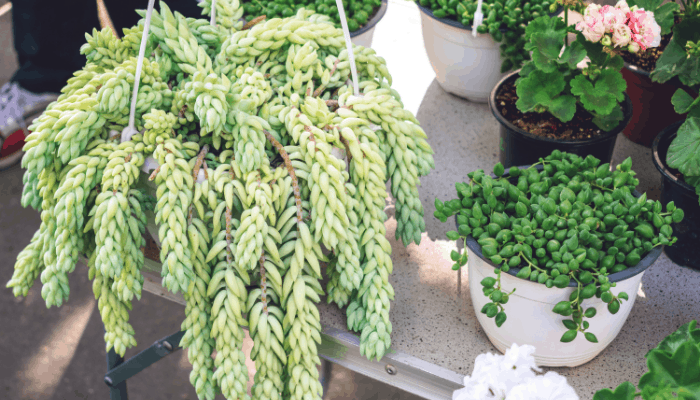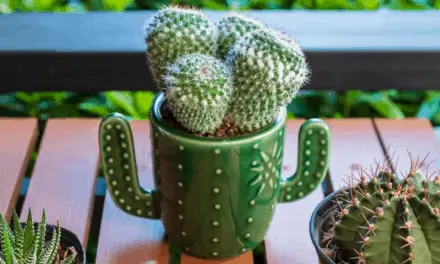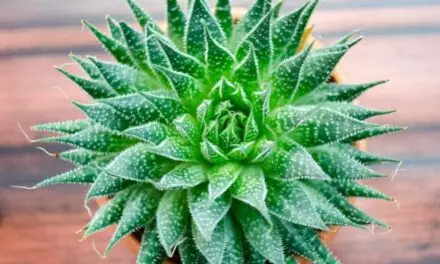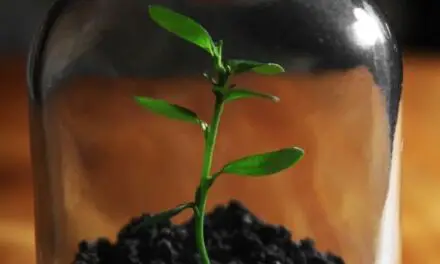Burro’s tail, or sedum morganianum, is a beautiful potted succulent that’s native to southern Mexico but can be found in nurseries throughout the world.
They make a perfect plant for hanging pots and high-up spaces but many new owners of the burro’s tail find that it can begin to shrivel on them.
In this article, we’ll look at the most common reasons your burro’s tail is shriveling, what to do, and how to stop it from happening.
Table of Contents
Why Is My Burro’s Tail Shriveling?
If your burro’s tail is shriveling, it is most likely because there is too much moisture in its soil. Burro’s tails are succulents and their leaves often begin to go soft and shrivel when they are overwatered.
Like most succulents, a burro’s tail is very low-maintenance and very forgiving if you ever forget to water it.
That’s why so many people love having them to decorate their homes.
However, the burro’s tail is not so forgiving and may begin to shrivel if you over-water it.
How To Stop Your Burro’s Tail From Shriveling

Keep A Watering Schedule
The watering schedule of your burro’s tail is very important in order to keep it healthy.
Always allow the soil to fully dry out before giving the plant any water.
In the summer it is okay to give this plant water more regularly because it is growing during the hotter months.
But once fall comes around you should reduce the frequency of water being given, as the plant won’t need to absorb as much.
When winter arrives the plant will need even less water, and only should be given water to prevent the soil from going completely dry.
In most cases, an indoor burro’s tail only needs water once a month.
Watch The Temperature And Sun Exposure
A potted burro’s tail can be placed outdoors in the summertime, but there are rules to keep them healthy.
They should never be kept in an environment that is below 40 degrees F.
When it comes to being placed in the sun, these plants need to get adjusted to it gradually.
If a plant that is accustomed to being indoors is placed outside for a full day in the sun (without gradually getting used to it) there is a risk of them getting a sunburn.
Can Light Exposure Be A Factor In Your Burro’s Tail Shriveling?
If a burro’s tail isn’t growing in the right light conditions then it could become unhealthy and begin to shrivel.
These plants grow best in bright light.
Insufficient light could lead to the plant’s leaves not being as full and lively and may lead to them appearing limp on the stem.
For best results make sure the burro’s tail is planted in well-draining soil and placed in an area with sufficient light.
Related Article: Do Succulents Need Distilled Water? (Or Is There A Better Choice?)
What Happens If I Overwater My Burro’s Tail?
If you continuously give your burro’s tail too much water it can easily lead to stem rot.
And root and stem rot can lead to other fungal diseases which can cause succulents to shrivel.
The best way to avoid this is by doing a finger test, where you stick your finger into the soil to see how dry it is.
If you feel any moisture during the finger test then it is best to wait a few more days and test again.
However, if the soil is dry then try to water the plant as deep as possible.
This is done to avoid getting any water on the succulent’s leaves, as they don’t tolerate that very well.
Can Underwatering Lead To My Borro’s Tail Shrivelling?
This is a possibility and has happened to many people who have forgotten to water their succulent.
Life can get busy and you may not realize that more than a month has gone by since you last gave their burro’s tail some water.
If this happens give the plant a drink and in a few days, it should be back to normal.
A good way to keep on top of this is by keeping a watering schedule.
There are many ways that you can do this so you don’t forget to water your plants.
The easiest ways for most people to keep on track of watering is either by marking the last watering date down on a calendar or downloading a succulent tracking app on your phone.
Final Thoughts
The most common reason for a burro’s tail to begin shriveling is because it’s not on a proper watering schedule.
Their watering schedule isn’t complicated, however, if it’s not stuck to the plant could become unhealthy.
Set a monthly reminder (and stick to it) to feed your burro’s tail and you likely won’t see any shriveling or any other problems.




